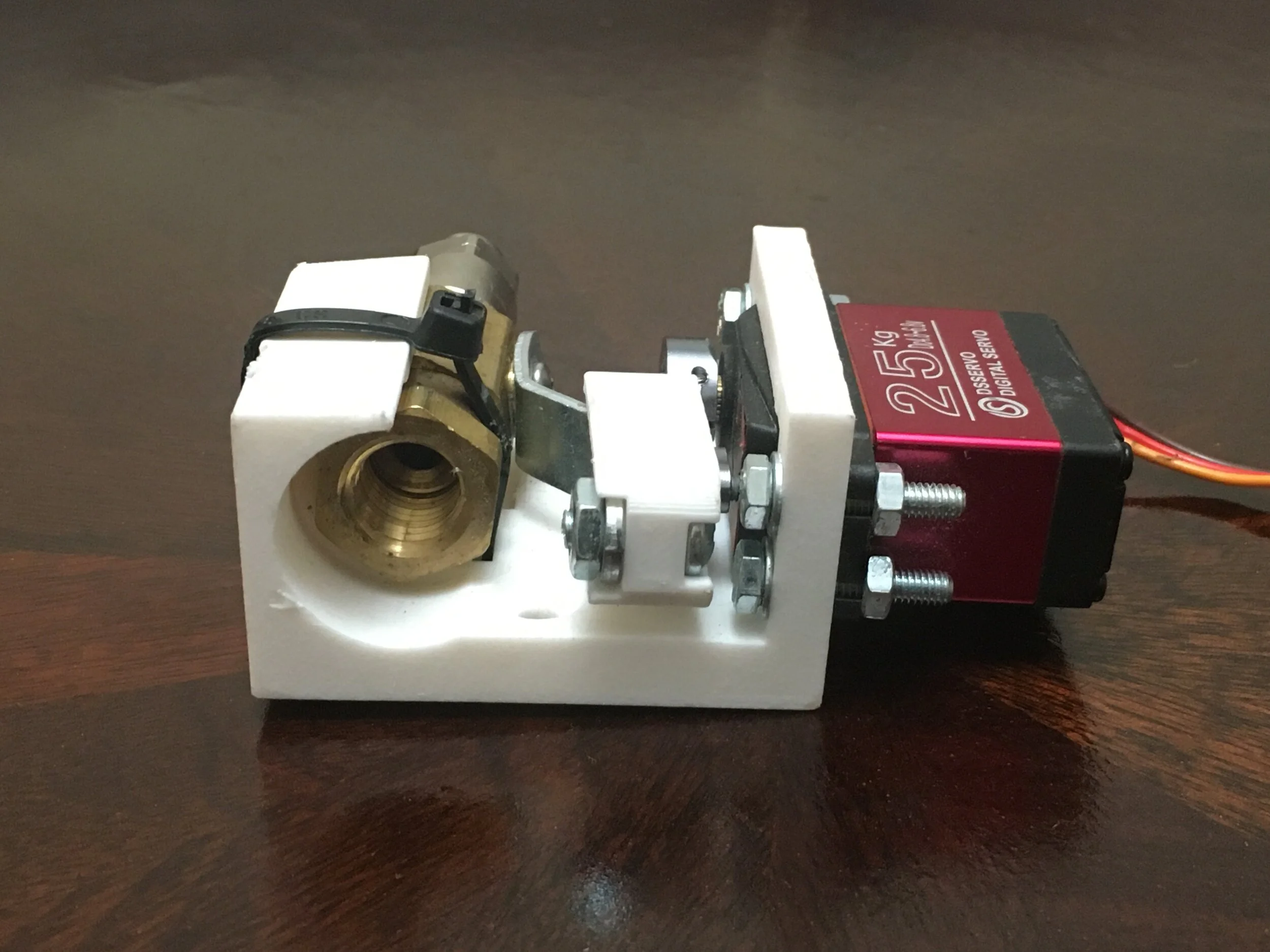Remote Control Firing System
The simplest way to remotely control Servo-Actuated Ball Valves is by using a 2.4GHz transmitter and receiver, of the type used for radio controlled aircraft. The Flysky FS-I6 or FS-I6X is the most economical option. We have found these transmitters to be more than sufficient in terms of range and reliability. The transmitter can be purchased bundled with a 6-channel receiver for around $50 USD.
With the addition of one or more valves and electronic switch relays, this controller can be used to build a GSE system compatible with commercial and experimental hybrid rocket motors for a total cost of around $120 USD.
To control valves, you will need a power supply, a voltage regulator, and a receiver, as well as a spare servo extension cable with a 3-pin connector.
For the power supply, it is recommended to use either a 12V automotive battery (motorcycle or lawn tractor batteries will also work, and are generally smaller and cheaper than a full-sized car battery), or a 3S LiPo. 12V batteries used for security alarm systems can also work, but may or may not be able to supply enough current. The servo will draw upwards of 2 Amps during operation.
The voltage regulator is needed to supply the receiver and servo with 5-6V. These Drok 12V to 6V DC buck converters work well. You can also use a BEC (Battery Elimination Circuit), or even an ESC (Electronic Speed Controller, used for electric motors) with an integrated BEC, intended for model aircraft. However, many BECs and ESC can only supply 1A.
To connect the voltage regulator to the receiver, you will need to splice the power out wires onto a 3-pin connector from a servo extension cable. The positive output goes to the red wire, negative to black, and the yellow or orange signal wire will be unused. Solder the splices, and insulate them with heat shrink tubing for durability.
Now you can simply plug the 3-pin connector from the voltage regulator into any of the unused channels on the receiver, and it will supply power to the receiver and servos.
You can plug the servos into any of the receiver channels, but if using the Flysky system, they should connect to channels 5 and 6, as these are “Auxiliary Channels” that can be assigned to switches on the transmitter. Tutorials for setting up the FS-I6/6X switches can be found easily on Youtube.
The image below shows the voltage regulator and receiver with servos connected to channels 5 and 6. Additional channels are also being used to supply power to the components of a data acquisition system.
To fire e-matches or other ignition events, use these RC on/off switch relays or similar products. The high current versions (8A, for the one linked) are recommended to avoid burning out the switches. They come with a 3-pin connector that you plug into a channel on the receiver, and power-in/power-out wires that you splice to the 12V battery and igniter, respectively.
You now have a way to remotely control two servo-actuated ball valves from up to several hundred meters away. The valves can be arranged in exactly the same way as the fill and dump solenoids in a typical hybrid rocket GSE setup.




